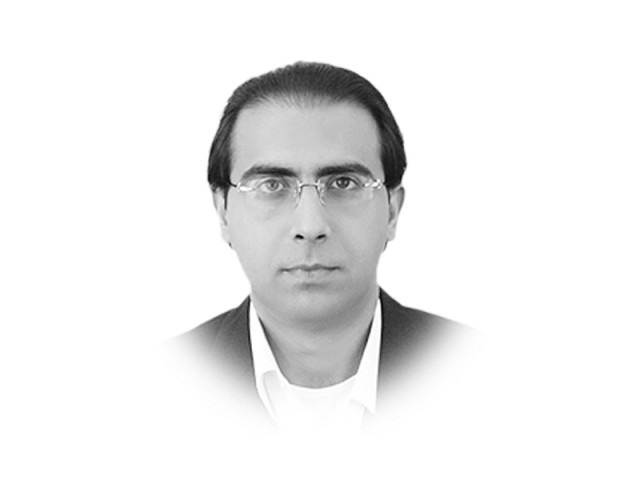Pakistan’s Hypocritical Season of Mercy
The Pakistani government’s death penalty spree has become a barbaric assembly-line

The writer is a lawyer and the Pakistan Researcher for Human Rights Watch
saroop.ijaz@tribune.com.pk
But Prime Minister Nawaz Sharif has made clear that the pause in that horrific body count is strictly temporary, until the conclusion of the holy month of Ramazan. His daughter, Maryam Nawaz Sharif, praised the temporary suspension of executions as an act of reverence for “human dignity”. That was a welcome admission that the death penalty offends human dignity. But it comes as no comfort to the 8,000 people on death row in Pakistan who face execution as soon as the government’s death penalty suspension ends next week.
The Pakistani government’s death penalty spree has become a barbaric assembly-line. On March 17, Pakistan executed 12 people, the highest number of executions in a single day in almost a decade. The government broke that record on April 21 by executing at least 15 people that day.

Along with the use of military courts against civilians and coerced repatriations of Afghans living in Pakistan, these executions are part of the government’s response to the horrific December 16, 2014 attack by the Pakistani Taliban splinter group Tehreek-e-Taliban on a school in Peshawar in northwestern Pakistan that left at least 148 dead — almost all of them children.
The government reacted by lifting a four-year unofficial death penalty moratorium for non-military personnel “in terrorism-related cases”. On March 10, the government lifted the death penalty moratorium for all capital crimes, including kidnapping and murder. The government’s motivations for its death penalty reinstatement have been a matter of populist pandering rather than pursuit of justice. In the province of Punjab alone, there are at least 62 people scheduled to be executed once the government’s Ramazan-imposed seasonal tolerance for “human dignity” comes to an end.
Those whose lives are at risk include Kaneezan Bibi, convicted of murder in January 1991. Despite compelling evidence that Bibi has a psychosocial disability, President Mamnoon Hussain rejected her mercy petition. Bibi is scheduled to be the ninth woman to be hanged in Pakistan’s history. Khizar Hayat is also scheduled for execution post-Ramazan, despite a 2008 diagnosis of paranoid schizophrenia. According to his lawyers, by 2012 Hayat had become so delusional that prison authorities isolated him from the general prison population by moving him to the prison hospital, where he has spent the last three years.
The looming execution of individuals with psychosocial disabilities is more than an affront to human dignity. It is an appalling violation of international human rights law, including obligations under the United Nations disability rights treaty, which Pakistan ratified in 2011. The UN Commission on Human Rights adopted resolutions in 1999 and 2000 urging countries that retain the death penalty not to impose it “on a person suffering from any form of mental disorder”. Section 84 of Pakistan’s Penal Code excludes from criminal punishment any person demonstrating “disorder of his mental capacities”.
Yet another death row prisoner facing execution post-Ramazan is Shafqat Hussain, who was allegedly 14- or 15-years-old when sentenced to death in 2004 for allegedly kidnapping and killing a seven-year-old boy. Hussain remains on death row despite compelling allegations that law-enforcement officers obtained his confession through torture. The Pakistani government’s death penalty spree has already involved multiple violations of the rights of those it has executed since December.
Take the case of Zulfiqar Ali, executed on January 13. Unable to afford a lawyer, the court-appointed lawyer who represented Ali never met with him once outside of court. Aftab Bahadur could also speak volumes for the Pakistan government’s disregard of human dignity. Bahadur was reportedly 15-years-old when convicted of murder in 1992. He maintained his innocence and said that he was prosecuted and convicted only because he was unable to afford a hefty bribe demanded by police who arrested him. He was executed on June 10, 2015.
Pakistan has ratified both the International Covenant on Civil and Political Rights and the Convention on the Rights of the Child, which specifically prohibit capital punishment of anyone who was under 18 at the time of the offence.
The prohibition is absolute. In July 2000, Pakistan issued a Juvenile Justice System Ordinance banning the death penalty for crimes by people under 18. However, the ordinance requires the existence of dedicated juvenile courts and other mechanisms not provided for by law in all parts of Pakistan, leaving juvenile offenders at risk of trial as adults in capital cases.
Prime Minister Nawaz Sharif has an obligation to safeguard the fundamental rights of the citizens of Pakistan, particularly their right to life. He should do so by immediately reinstating an indefinite death penalty moratorium and move towards abolition. For inspiration, he can reflect on the words of Aftab Bahadur in a letter published hours before his execution. Bahadur wrote, “While the death penalty moratorium was ended on the pretext of killing terrorists, most of the people here in Kot Lakhpat prison are charged with regular crimes. Quite how killing them is going to stop the sectarian violence in this country, I cannot say. I hope I do not die on Wednesday, but I have no source of money, so I can only rely on God and on my volunteer lawyers. I have not given up hope, though the night is very dark.”
The government of Pakistan has a choice. It can act to defend fundamental human rights and consign the death penalty to the dustbin of history. Or it can end this brief season of “human dignity” and condemn Kaneezan Bibi, Khizar Hayat and thousands of others to the darkness of a vindictive death penalty policy with no end in sight.
Published in The Express Tribune, July 18th, 2015.
Like Opinion & Editorial on Facebook, follow @ETOpEd on Twitter to receive all updates on all our daily pieces.


















COMMENTS
Comments are moderated and generally will be posted if they are on-topic and not abusive.
For more information, please see our Comments FAQ